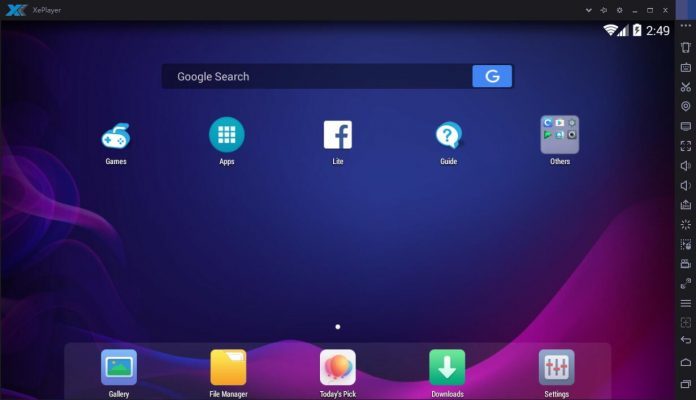Emulator Android Untuk Ram 1gb

Namun meski begitu untuk menjalankan emulator android dalam ponsel anda membutuhkan spesifikasi PC yang lumayan agar bisa berjalan dengan lancar seperti RAM minimal 2 GB atau lebih baik 4 GB agar emulator bisa berjalan dengan lancar tanpa lag.

Embed this Program Add this Program to your website by copying the code below. Preview Preview. Leapdroid targets its advertising at the mobile gaming market, and some of its features are clearly intended for this purpose. For instance, you can create multiple emulator profiles simultaneously, allowing you to play the same game while logged in from two different accounts. Tools like this have limited use unless you play a lot of action-limited mobile games.
Installation and use are simple. Keymapping can take a while for complex apps, but in most cases the translation simply means clicking instead of tapping, especially for games.
Introduction Android now supports devices with 512MB of RAM. This documentation is intended to help OEMs optimize and configure Android 4.4 for low-memory devices. Several of these optimizations are generic enough that they can be applied to previous releases as well. Android 4.4 platform optimizations Improved memory management • Validated memory-saving kernel configurations: Swap to ZRAM. • Kill cached processes if about to be uncached and too large. • Don't allow large services to put themselves back into A Services (so they can't cause the launcher to be killed). • Kill processes (even ordinarily unkillable ones such as the current IME) that get too large in idle maintenance.
• Serialize the launch of background services. • Tuned memory use of low-RAM devices: tighter out-of-memory (OOM) adjustment levels, smaller graphics caches, etc. Reduced system memory • Trimmed system_server and SystemUI processes (saved several MBs). • Preload dex caches in Dalvik (saved several MBs). • Validated JIT-off option (saves up to 1.5MB per process).
• Reduced per-process font cache overhead. • Introduced ArrayMap/ArraySet and used extensively in framework as a lighter-footprint replacement for HashMap/HashSet. Procstats Added a new Developer Option to show memory state and application memory usage ranked by how often they run and amount of memory consumed. API Added a new ActivityManager.isLowRamDevice() to allow applications to detect when running on low memory devices and choose to disable large-RAM features. Memory tracking New memtrack HAL to track graphics memory allocations, additional information in dumpsys meminfo, clarified summaries in meminfo (for example reported free RAM includes RAM of cached processes, so that OEMs don't try to optimize the wrong thing).
Build-time configuration Enable Low Ram Device flag We are introducing a new API called ActivityManager.isLowRamDevice() for applications to determine if they should turn off specific memory-intensive features that work poorly on low-memory devices. For 512MB devices, this API is expected to return true. It can be enabled by the following system property in the device makefile.
PRODUCT_PROPERTY_OVERRIDES += ro.config.low_ram=true Launcher Configs Ensure the default wallpaper setup on launcher is not using live-wallpaper. Low-memory devices should not pre-install any live wallpapers. Kernel configuration Tuning kernel/ActivityManager to reduce direct reclaim Direct reclaim happens when a process or the kernel tries to allocate a page of memory (either directly or due to faulting in a new page) and the kernel has used all available free memory.
This requires the kernel to block the allocation while it frees up a page. This in turn often requires disk I/O to flush out a dirty file-backed page or waiting for lowmemorykiller to kill a process. This can result in extra I/O in any thread, including a UI thread. To avoid direct reclaim, the kernel has watermarks that trigger kswapd or background reclaim. This is a thread that tries to free up pages so the next time a real thread allocates it can succeed quickly. The default threshold to trigger background reclaim is fairly low, around 2MB on a 2GB device and 636KB on a 512MB device.
And the kernel reclaims only a few MB of memory in background reclaim. This means any process that quickly allocates more than a few megabytes is going to quickly hit direct reclaim. Support for a new kernel tunable is added in the android-3.4 kernel branch as patch 92189d47f66c67e5fd92eafaa287e153197a454f ('add extra free kbytes tunable'). Cherry-picking this patch to a device's kernel will allow ActivityManager to tell the kernel to try to keep 3 full-screen 32 bpp buffers of memory free. These thresholds can be configured via the framework config.xml